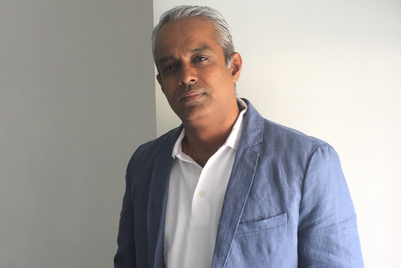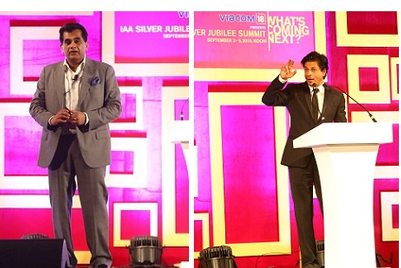
In the global travel industry, India is referred to as a ‘sleeping giant’ or a ‘sleeping elephant’. The country’s many assets are eulogised at international tourism meetings. The chasm between potential and performance has existed not in spite of, but because of, the richness, authenticity and complexity of its assets and the size of the country.
A crisis of massive magnitude gripped global tourism in 2001-02. For India, this was a time for reflection—and action. The biggest challenge was to develop one powerful idea that would unify India as an aspirational destination. That idea was christened ‘Incredible India’. The campaign was launched at the peak of this crisis, to bring back consumer demand, and generate momentum and growth in the tourism industry. A strong image increased consumer confidence and enhanced the desirability of India’s tourism products. It catalysed worldwide brand recognition and a strong brand equity.
On a recent visit to Kerala, I discovered Kalari Kovilakom, CGH Earth’s Palace of Ayurveda, aimed at giving the tourist a chance to start one’s life all over again. It promises not only a new body and mind, but a connection with the spirit. This authentic experience attracts an international clientele and operates at full occupancy. Breaking new ground, the Taj group, in collaboration with Conservation Corporation Africa, has created interpretive wildlife experiences with eco-footprint in places like Bandhavgarh and Pench. Meanwhile, Aman Nath and Francis Wacziarg operate the Neemrana ‘non-hotels’ and provide a cultural experience through the heritage properties they have restored across the nation.
Indian entrepreneurs are experimenting, driven by dynamism and influenced by innovation and market opportunities. These experiences represent a new style of Indian elegance, luxury and spirituality. They provide a sense of timelessness, an opportunity to discover India and its people. In this shift towards experiential tourism lies the makings of Indian tourism.
I have never believed in the numbers game. India should focus not on the masses, but on foreign tourists spending more time and money here. By targeting the upmarket clientele, India’s net value realisation will go up. Markets are deferential and responsive to the views of upscale tourists; the mass market inevitably follows. This has a positive impact on the destination itself: an inflow of upscale tourists accelerates investment and attracts talent.
The tourism sector has been one of the major beneficiaries of sustained growth in the Indian economy. Domestic tourism is witnessing a phenomenal momentum—Indians are travelling from one part of the country to another, discovering unexplored places. Kerala, Goa, Rajasthan and now MP, have emerged as 365-days-a-year destinations on the strength of domestic tourism. The success of states in attracting domestic traffic will become the springboard for international source markets.
Indians are travelling not merely to domestic locations, but abroad—discovering new destinations, exploring new products, shopping, and trying out different cuisines. Indians are already considered the highest spenders in several destinations in the Asia-Pacific region. A recent report by VisitBritain highlights the fact that Indian tourists outspent Americans in Britain. No wonder: the World Travel & Tourism Council has estimated that India and China will increase their travel and tourism demand most rapidly until 2018. These two countries together have a population double the size of the US, Western Europe and Japan. Only five percent of their population has travelled extensively, as compared to 50 percent in developed countries. Hence, India and China will be the future tourism tigers, and Asian-led growth will be the key feature of the travel and tourism industry in the coming years.
The global economic downturn has impacted tourism, but I have no doubt that the industry will be resilient and bounce back. Tourism has a unique capacity to adapt and flourish. It has constantly demonstrated its ability to overcome crises. Economic downturns impact tourism only temporarily—they redistribute it geographically, alter the product and make travellers creative.
The present economic crisis also presents opportunity. Until the mid-1990s, no one had heard of Kerala as a tourism destination. Its emergence in great measure was due to traffic diversion from terror-prone Kashmir. But Kerala was ready—it had developed products like the backwaters and ayurveda; its entrepreneurs had created experiential boutique resorts; proper infrastructure was in place.
Other states will emerge as tourism destinations if they enhance the quality of experience, improve infrastructure and create sub-brands. In an emerging economy, demographic changes, and the rise of urban middle classes, the potential of travel and tourism as an employment creator still remains untapped.
There is a need to reinvigorate India’s positioning and branding as an attractive destination. The Incredible India brand has to be constantly re-invented. This necessitates an effective private-public partnership. India needs an institutional restructuring with a tourism board like that of Singapore, Malaysia or Thailand, where hotels, tour operators and the government are all stakeholders. India also needs to unleash a new campaign in the global market every year. This calls for creativity, brilliant execution and constant innovation to ensure India stays incredible.
(Amitabh Kant is chief executive officer and managing director of the Delhi Mumbai Industrial Corridor Development Corporation. This article is post an interaction conducted by Conde Nast Traveller)




.jpg&h=334&w=500&q=100&v=20250320&c=1)
.jpg&h=334&w=500&q=100&v=20250320&c=1)

.jpg&h=334&w=500&q=100&v=20250320&c=1)


.jpg&h=334&w=500&q=100&v=20250320&c=1)


.jpg&h=334&w=500&q=100&v=20250320&c=1)





.jpg&h=268&w=401&q=100&v=20250320&c=1)
.jpg&h=268&w=401&q=100&v=20250320&c=1)
.jpg&h=268&w=401&q=100&v=20250320&c=1)
